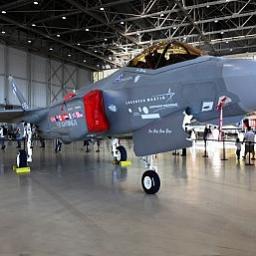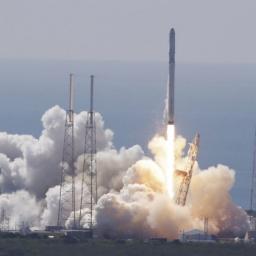Solar Impulse 2 grounded in Hawaii after record-breaking flight across Pacific Ocean
 Solar Impulse 2 has successfully landed in Hawaii after completing its audacious five-day journey across the Pacific Ocean. The mission, which has been dogged by recent delays, touched down safely at Kalaeloa Airport with Swiss pilot Andri(C) Borschberg in the cockpit. He had endured more than 100 hours alone in the plane with minimal sleep during the flight - smashing the record for the longest solo flight in aviation history by two days. The plane had originally been intended to fly straight from China to Hawaii, but worsening weather on the way meant Borschberg had to abort and land in Japan. Bad weather had also kept the plane grounded in China for several weeks longer than intended.
Solar Impulse 2 has successfully landed in Hawaii after completing its audacious five-day journey across the Pacific Ocean. The mission, which has been dogged by recent delays, touched down safely at Kalaeloa Airport with Swiss pilot Andri(C) Borschberg in the cockpit. He had endured more than 100 hours alone in the plane with minimal sleep during the flight - smashing the record for the longest solo flight in aviation history by two days. The plane had originally been intended to fly straight from China to Hawaii, but worsening weather on the way meant Borschberg had to abort and land in Japan. Bad weather had also kept the plane grounded in China for several weeks longer than intended.The next leg of the global circumnavigation flight was to be a four-day crossing to Phoenix, Arizona, but that has been postponed at least until 2016. The plane's batteries overheated and were damaged beyond repair during the latest leg of the trip. It's not the technology itself that was the problem, the pilots say, but how the batteries were insulated. Replacing and testing the batteries will take at least a few months, and because the days in the Northern Hemisphere are already getting shorter, completing the rest of the journey in 2015 isn't an option.
The flight began in March over the desert sands of Abu Dhabi, and flown across Oman, India, Myanmar, China, Japan, and the Pacific Ocean. If all goes to plan, Bertrand Piccard will fly the next leg to Phoenix, Arizona, sometime in April. Piccard and Borschberg will alternate flying across the U.S., the Atlantic, and eventually all the way back to Abu Dhabi, completing the 35,000 kilometer (22,000 mile) journey.



